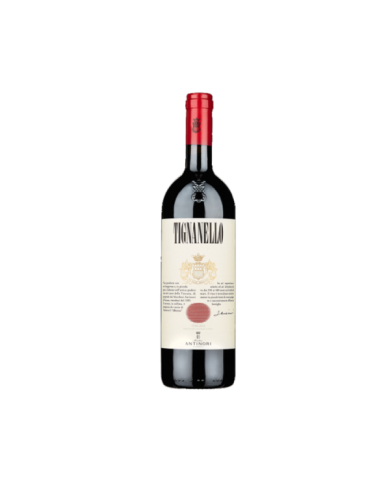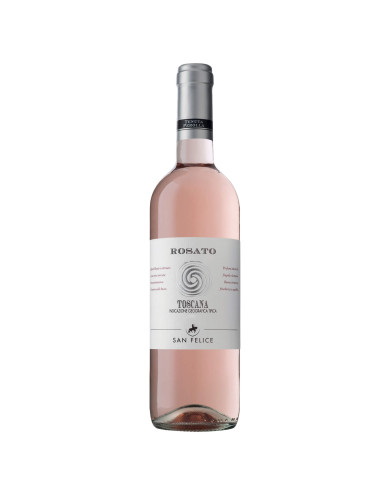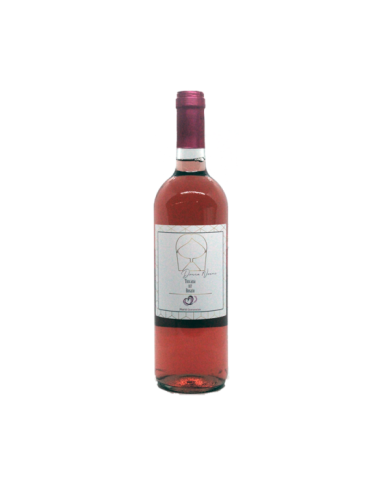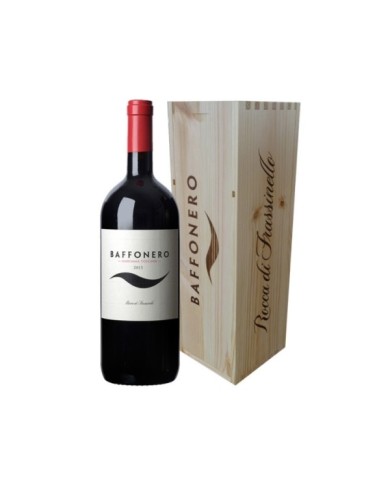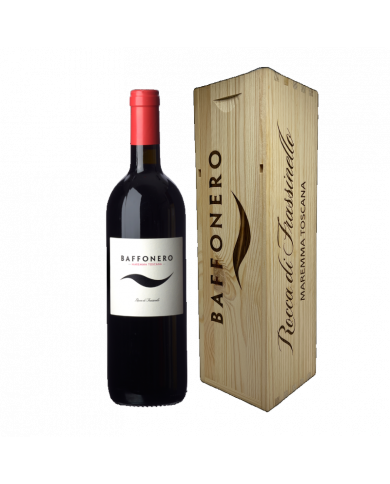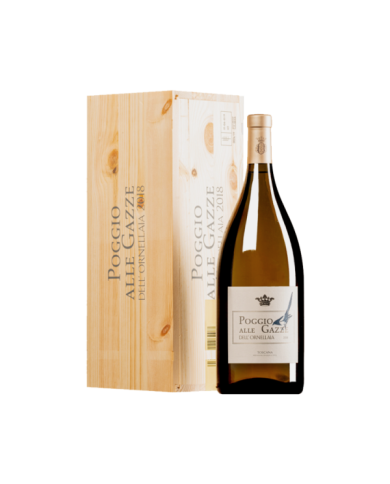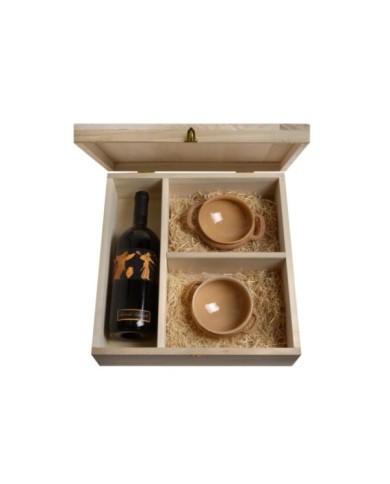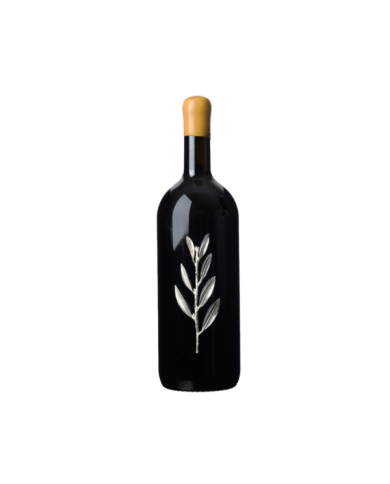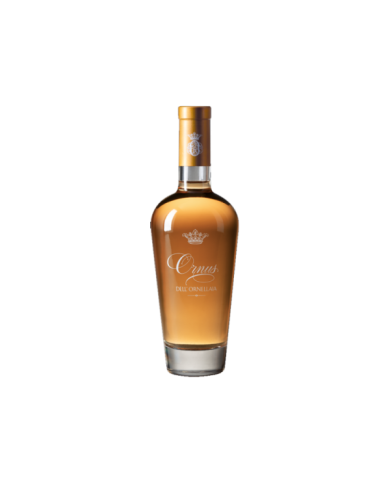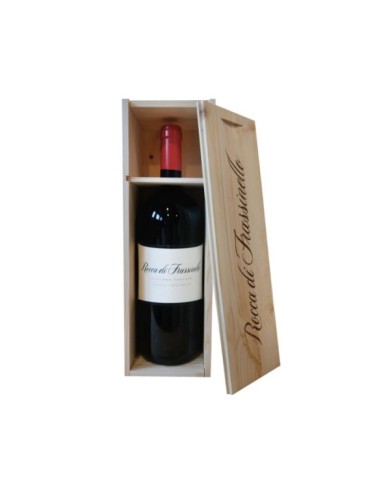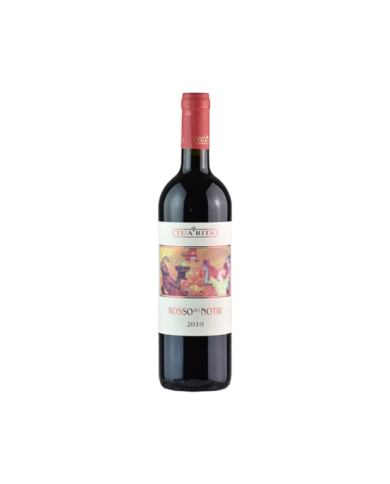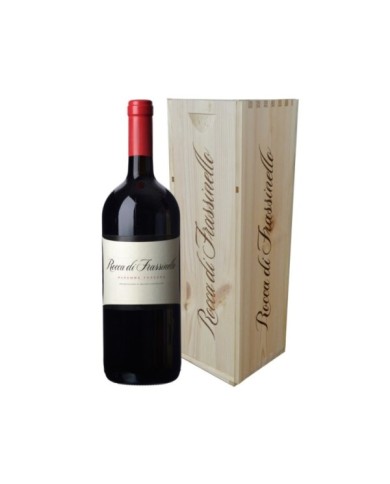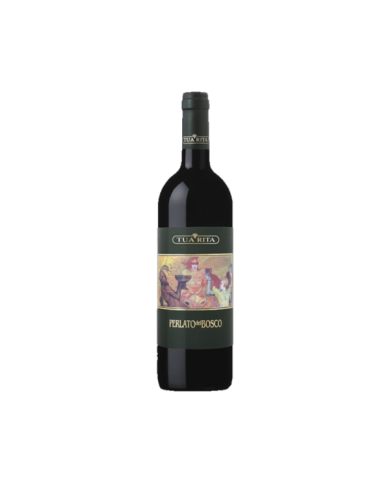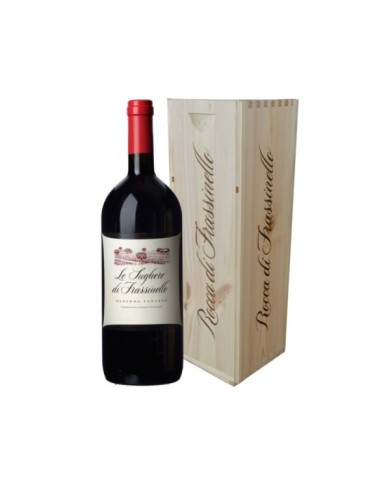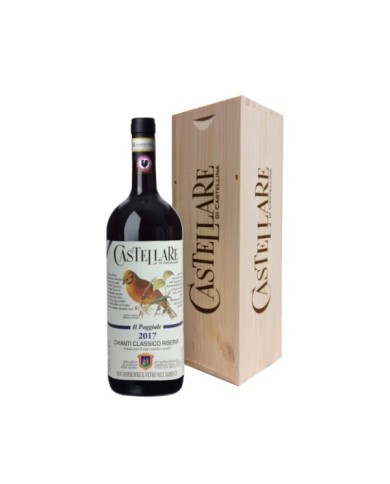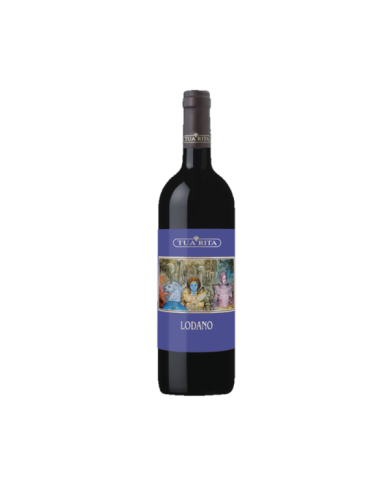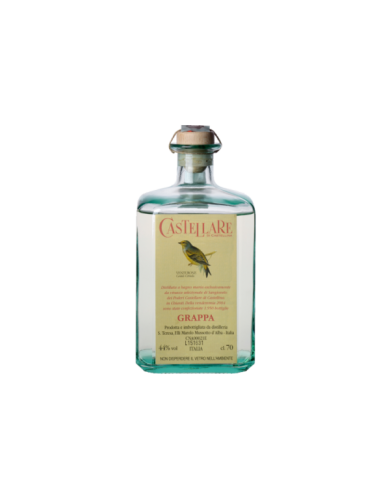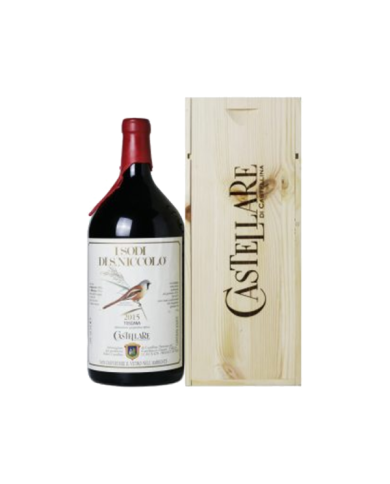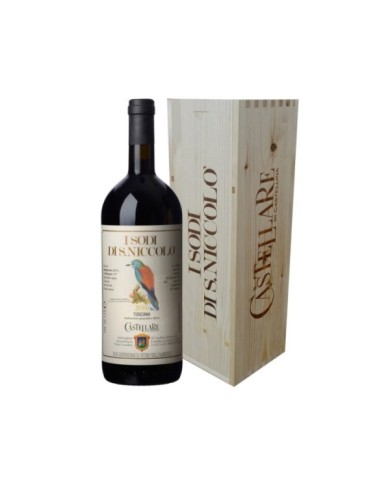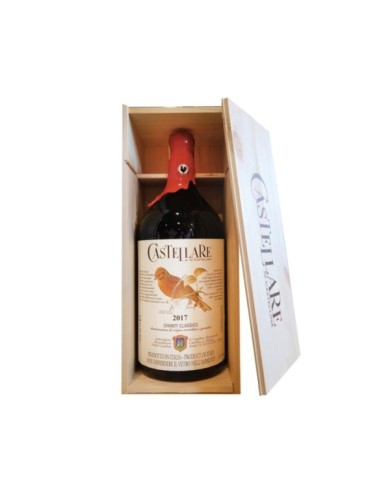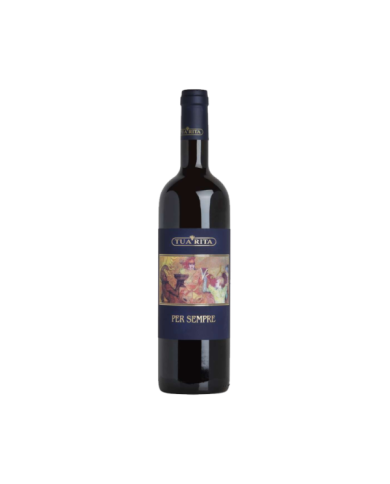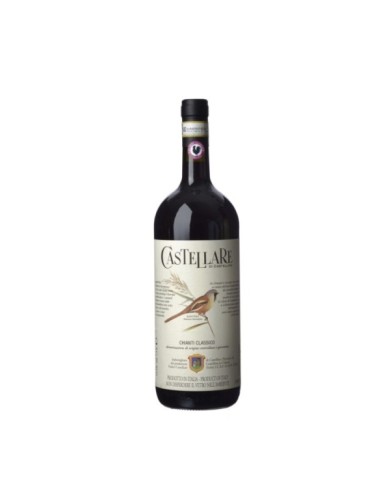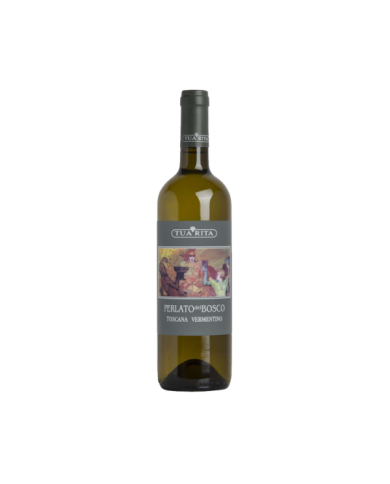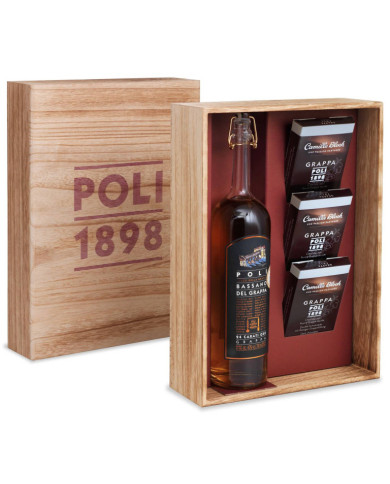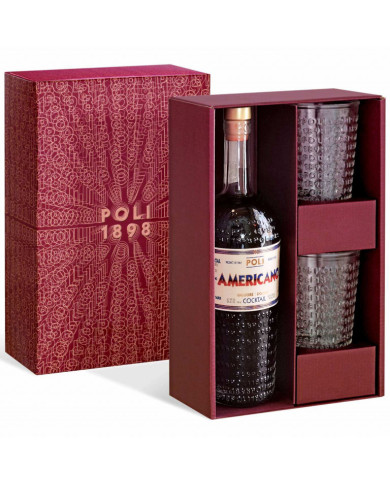Very bright ruby red. The nose reveals notes of black currant and intense citrus aromas of bergamot. Balsamic notes of mint, licorice, cardamom and floral notes of violet. In the mouth it shows the classic tannic texture of Sangiovese di Montalcino, dense but not devoid of harshness. Intense and persistent finish. Throughout the meal, it goes well with egg pasta dishes such as pappardelle topped with hare, wild boar and red meat sauce, from steak to stew.
Intense ruby red with garnet reflections. The nose is intense, fresh, fragrant, mineral, with hints of aromatic herbs, cherries in alcohol, violet, ginger. On the palate it is persistent, mineral, with a slightly rough tannin. Final Nota of bitter almond and hazelnut, of great elegance. For the whole meal, it is excellent with short-cooked red meats, it goes beautifully with the classic Florentine steak.
Intense ruby red with violet reflections. The nose is ripe, with notes of dark fruit and fresh background in the finish, plum pulp predominates together with hints of cherry, progressively and balanced towards notes of licorice and mint. The taste has promptness and availability, it is rich and harmonious. Excellent on the palate, thanks to the acidity and the structured softness of the tannins. The aftertaste is rich, savory and characterized by a sweet persistence. Throughout the meal, it is enhanced with rich meat dishes. Roasts and braised meats also based on game.
Intense ruby red. The nose expresses balsamic notes, hints of coffee and red fruit. On the palate it is soft and velvety, intense, warm and with excellent persistence. For the whole meal, it goes well with meat dishes, including important roasts, cured meats and medium-aged cheeses.
The consumption of wine took place mainly on social occasions and took place according to precise rituals. Before the arrival of Greek fashion, which involved the use of a large vase for diluting wine with water and pouring it into large bowls (the kylikes), in Vetulonia typical local traditional vessels are used. This is testified, for example, by the vases found in the pit tomb of tumulus V of the necropolis of Santa Teresa, a locality located a few kilometers from San Germano dating back to 630 BC, the monumental kantharos was probably used to contain the wine that was then drawn and drunk through the bowls found around the large vase. Inspired by these researches and by the designs that decorate the great stamnos, we have created a limited series of Rocca di Frassinello magnum bottles with a special label depicting the Dionysian procession. The bottle is contained in a wooden case, decorated and handcrafted, which also contains two copies of the bucchero bowls. The historical value of the tombs and its findings linked to the consumption of wine is above all one: that the place was ideal for cultivating the vine, as it is today, already three thousand years ago.
A special edition of the first label of Rocca di Frassinello - le grand vin, the Rocca di Frassinello - to celebrate the holy year.
Ornus dell ' Ornellaia , the result of a late harvest of Petit Manseng, is a wine produced in extremely limited quantities, capable of giving a new dimension to the estate. In some vintages the very small ŌĆ£PalmettaŌĆØ vineyard offers the perfect conditions for the production of this exclusive sweet wine. The name Ornus dell ' Ornellaia is inspired by the' Fraxinus Ornus', the Latin name of the Ornella, the tree to which we owe the name of Ornellaia . Typical plant of the Mediterranean scrub, also known as the 'manna tree' due to its precious biblical lymph used as an ancient sweetener, the Orniello or 'Faxinuns Ornus' alludes with perfect correspondence to the sweetness of Ornus dell' Ornellaia .
Special edition of the first label, le grand vin, of Rocca di Frassinello , dedicated to the Etruscan Necropolis of San Germano, brought to light during a project supported by the Maremma company of the DCC group.
Intense ruby red with slight garnet reflections. On the nose it expresses beautiful spicy notes that are flanked by strong fruity hints, cherry and blackberry. Balsamic traces of cocoa, tobacco, mint open to a taste of great breadth and infinite grace, deep and balanced. Of great persistence. Throughout the meal, it goes well with red meats, roasts, game and aged cheeses.
Intense ruby red with slight garnet reflections. The nose expresses beautiful spicy notes that are flanked by strong fruity, cherry and blackberry hints. Balsamic traces of cocoa, tobacco, mint open to a taste of great breadth and infinite grace, deep and balanced. Of great persistence. Throughout the meal, it goes well with red meats, roasts, game and aged cheeses.
Intense ruby red. The nose expresses beautiful notes of red fruits and sweet spices, a balsamic and only remotely vegetable touch. On the palate it is rich, full-bodied, soft and characterized by a velvety tannic texture. Of excellent persistence. For the whole meal, it goes well with savory first courses and game such as deer, wild boar, hare.
Intense and bright ruby red color to the eye. The nose is opened by the classic floral hints of violet, then followed by the fruity notes of plum, morello cherry and cherry, finally completed by a pleasant mineral nuance. The mouth continues on the path traced by the sense of smell, revealing itself to be typical, punctual and of excellent length.
Perfect to accompany red meat, it is ideal to be paired with the cut of Chianina.
It is the union of a large and exuberant Petit Verdot with a more mature Merlot. The long aging in barrique gives the wine softness and elegance and is noted for its decidedly modern style.
Intense and bright ruby red color to the eye. The nose is opened by the classic floral hints of violet, then followed by the fruity notes of plum, morello cherry and cherry, finally completed by a pleasant mineral nuance. The mouth continues on the path traced by the sense of smell, revealing itself to be typical, punctual and of excellent length.
Perfect to accompany red meat, it is ideal to be paired with the cut of Chianina.
Poggio ai Merli is a great Tuscan red wine made from Merlot grapes only, aged in new barriques for 30 months. The bouquet is broad, intense and balsamic, with notes of wild berries and dark spices. On the palate it is robust, warm, soft and enveloping, as only the best Supertuscans can be
Intense ruby red with garnet reflections. The nose expresses richness and intensity thanks to beautiful fruity and slightly spicy, balsamic and floral notes. On the palate it is centered, juicy, fine and complete. It closes with a vibrant and persistent finish. Throughout the meal, it goes well with salami and meats rich in flavor, tasty and aromatic cheeses.
Grappa di Castellare is made with Sangioveto pomace, brought to vinification within 36 hours, thus maintaining the freshness of the aromas and the typical notes of the grape. The result is a distillate of incomparable finesse, extraordinary for purity and quality.
Intense ruby red with garnet reflections. The nose expresses richness and intensity thanks to beautiful fruity and slightly spicy, balsamic and floral notes. On the palate it is centered, juicy, fine and complete. It closes with a vibrant and persistent finish. Throughout the meal, it goes well with salami and meats rich in flavor, tasty and aromatic cheeses.
Grappa di Castellare is made with Sangioveto pomace, brought to vinification within 36 hours, thus maintaining the freshness of the aromas and the typical notes of the grape. The result is a distillate of incomparable finesse, extraordinary for purity and quality.
The Chianti Classico of Castellare di Castellina is born in vineyards located in the municipality of Castellina in Chianti. It is produced with 95% Sangiovese grapes and 5% Canaiolo grapes, harvested in October. Fermentation takes place in stainless steel tanks at a controlled temperature of 28 ┬░ C for 15-20 days. Subsequently the wine is aged in barrique for 7 months, and for a further 7 months in the bottle. This Chianti Classico is characterized by a brilliant ruby red color with purple reflections. The nose opens with hints of cherries and violets, enriched by pleasant spicy notes of licorice and vanilla. On the palate it is balanced, with harmonious and delicate tannins. The wine has a finish that gives pleasant sweet sensations. Perfect to accompany cold cuts, first courses with meat sauce and roasts, it is ideal in combination with stews, game and aged cheeses.
The Chianti Classico of Castellare di Castellina is born in vineyards located in the municipality of Castellina in Chianti. It is produced with 95% Sangiovese grapes and 5% Canaiolo grapes, harvested in October. Fermentation takes place in stainless steel tanks at a controlled temperature of 28 ┬░ C for 15-20 days. Subsequently the wine is aged in barrique for 7 months, and for a further 7 months in the bottle. This Chianti Classico is characterized by a brilliant ruby red color with purple reflections. The nose opens with hints of cherries and violets, enriched by pleasant spicy notes of licorice and vanilla. On the palate it is balanced, with harmonious and delicate tannins. The wine has a finish that gives pleasant sweet sensations. Perfect to accompany cold cuts, first courses with meat sauce and roasts, it is ideal in combination with stews, game and aged cheeses.






